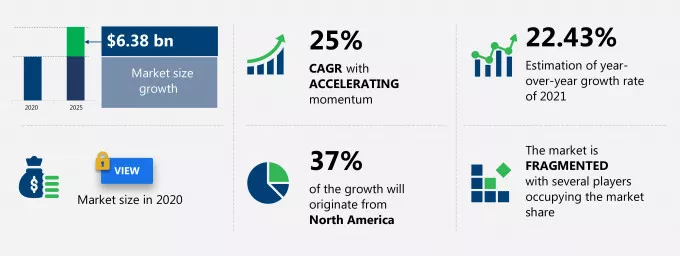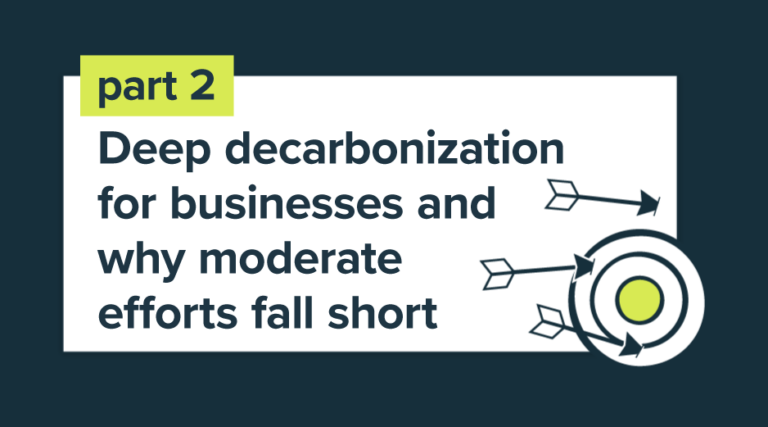For decades, carbon emissions have been steadily rising, creating a cause for concern that has reached a fever pitch in recent years. With scientists signaling the drastic impact climate change could have on the world’s future, efforts to reduce and eventually eliminate carbon emissions have gained prominence.
From corporate America to the public sector, energy efficiency and sustainability is now a key imperative. Whether organizations are looking to meet government mandates or fulfill their own carbon reduction targets, sustainability teams are scrambling to reduce their emissions. However, gaining insight into carbon emissions from buildings, vehicles, equipment, and myriad other sources is difficult, especially for large organizations.
Luckily, the software industry has stepped in and developed a variety of carbon accounting software solutions to track these carbon emissions. But are these solutions the key to reaching net-zero emissions, or has the real solution been under your nose all along? Let’s take a look.
The Emergence of Carbon Accounting
With companies of all sizes feeling pressure from government initiatives and regulations to reduce carbon emissions, the carbon accounting software market is expected to increase by $6.38 billion by 2025, according to a report by Technavio.

The report highlighted the following:
- Key Carbon Accounting Software Market Driver:
- The need to reduce the overall costs incurred by enterprises is a key driver driving the carbon accounting software market.
- Key Carbon Accounting Software Market Trend:
- The increasing government initiatives and regulations to reduce carbon emissions is another factor supporting the carbon accounting software market share growth.
- Key Carbon Accounting Software Market Challenge:
- The difficulty in capturing energy usage data will be a major challenge for the carbon accounting software market during the forecast period.
This wasn’t news to us at EnergyCAP. In the past few years, we’ve witnessed customer conversations shift from “I need software to help me reduce energy costs” to “I need a solution to help me monitor and reduce emissions in my buildings”. What was most interesting (and frankly exciting) to us was that the key market challenge lies in gaining access to energy usage data.
The report specifically highlights, “Collecting the data on energy usage is the most critical part of any report on environmental sustainability… Most organizations rarely track their energy usage…Additionally, at times, the information related to energy is tracked on the basis of cost but not at the usage level. The calculation of carbon emissions in any given year involves tracking down utility invoices for hundreds of buildings and contacting multiple plant managers to ascertain the use of propane, natural gas, and other energy sources”
Understanding usage data is imperative in carbon accounting, and we believe utility bill data is the best place to start.
Utility Bill Data is Key to Reducing Carbon Emissions
We know that 40% of global carbon emissions come from the built environment and the largest opportunity for carbon reduction lies within the buildings we own and operate. As mentioned, the challenge with carbon accounting is finding a way to accurately calculate carbon emissions for companies or organizations with large portfolios of buildings. Plant managers and facilities professionals struggle with the difficult and time-consuming task of reliably, quickly and accurately collating energy usage data. However, building level energy consumption data is the only true way to gain a holistic understanding of a company’s emissions.
That’s where we can help. Automating the collection of accurate utility bill data is the key to carbon accounting and reduction. Putting real-time utility bill data in the hands of energy managers or sustainability leaders allows them to analyze the company’s existing energy usage and begin to identify opportunities for improvement.
It’s a lot like having a personal budget. Knowing how much you’re spending and where you’re spending it makes it much easier to recognize where you need to cut back to save money. There are certain expenses that must be paid and can’t be cut back, such as rent or insurance. Other expenses, like forgotten subscriptions or shopping sprees, can easily be nixed or reduced.
The Solution: Energy Management Software
Utility bill data is the foundation to establishing your net-zero goals and monitoring your targets over time. As such, companies of all sizes should consider investing in an energy management and utility bill accounting software solution like EnergyCAP.
Utility bill data aggregation, normalization, and visualization is core to what we do. Energy and sustainability management is complex, but EnergyCAP gives you all the tools you need to transform your utility bill data into actionable information that saves time and money and reduces carbon emissions.
First and foremost, EnergyCAP helps streamline utility bill accounting, minimizing human error and ensuring all your energy usage information is in one location. Once your utility data is in the EnergyCAP software, you can easily analyze energy data for your entire organization; you can also hone in on individual buildings or meters if you want to get more granular.
EnergyCAP comes with a variety of dashboards and reports to help energy managers quickly identify troublesome areas. There’s no faster way to identify and eliminate excess energy usage.
If your organization is fighting the good fight against carbon emissions, you need to properly arm your energy and sustainability team members.
Want to learn more? Download our latest eBook “Why Utility Data is the First Step in your Sustainability Strategy”

 Best-in-class portfolio-level energy and utility bill data management and reporting.
Best-in-class portfolio-level energy and utility bill data management and reporting.
 Real-time energy and sustainability analytics for high-performance, net-zero buildings.
Real-time energy and sustainability analytics for high-performance, net-zero buildings.
 A holistic view of financial-grade scope 1, 2, and 3 carbon emissions data across your entire business.
A holistic view of financial-grade scope 1, 2, and 3 carbon emissions data across your entire business.
 Energy and sustainability benchmarking compliance software designed for utilities.
Energy and sustainability benchmarking compliance software designed for utilities.




